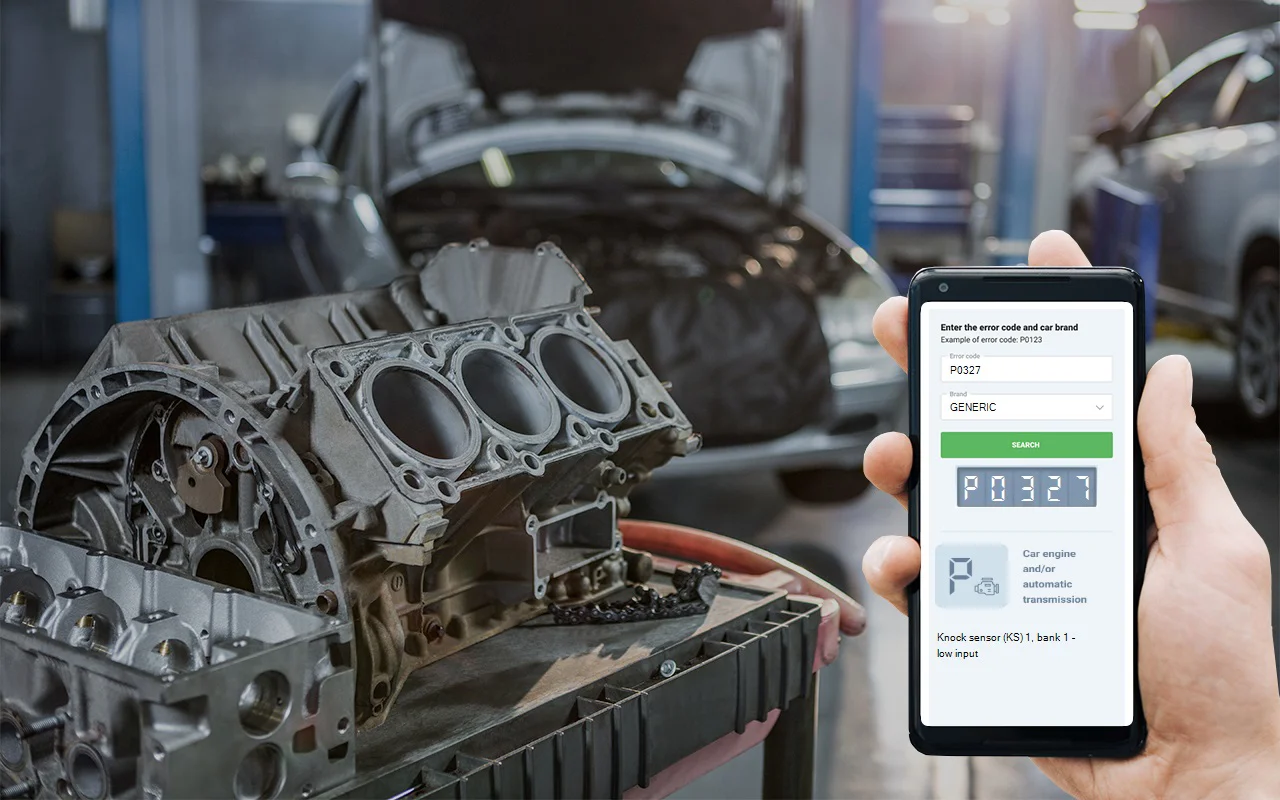When I come across a P0327 code, here’s what it really means: your vehicle’s computer has picked up on a low voltage signal coming from the knock sensor circuit on Bank 1-or from the only sensor if your engine uses just one. Think of the knock sensor as the engine’s own set of ears. It’s always listening for odd vibrations or knocking inside the engine, which is what happens when fuel burns unevenly or pre-ignites. The computer relies on that signal to fine-tune ignition timing, keeping everything running smooth and protecting the motor from serious internal harm. If the sensor isn’t talking to the computer properly, the engine can’t defend itself against damaging knock. So, in a nutshell, this code’s all about making sure your engine doesn’t tear itself up from the inside out.
DTC P0327
Causes of P0327 Engine Code
From my time under the hood, the most common culprit for a p0327 code is a bad knock sensor-these things just wear out, especially after years of heat cycles or if they get soaked (you’d be surprised how often water finds its way into those sensor wells, especially on some V8s). But it’s not always the sensor. Damaged wiring, corroded or loose connectors, or even a glitch in the PCM (like outdated software) can trigger this code. Every now and then, I’ve seen a sensor that’s mounted wrong or a mechanical issue that keeps the sensor from picking up knock like it should. Here’s what I always check first when this code pops up:
- Knock sensor failure
- Issues in the wiring harness or connectors (broken, loose, or corroded)
- Water getting into the sensor area (common under intake manifolds)
- Problems with the PCM software or-rarely-the PCM itself
Symptoms of P0327 Code
For most folks, the check engine light is your first warning sign. Sometimes, you’ll catch a pinging or rattling noise-especially when you hit the gas. That’s knocking, and it’s not something to ignore. You might notice the engine running rough, or the RPMs might dance around a bit. But here’s the tricky part: sometimes, you won’t notice anything at all. No odd sounds, no performance drop-just that light staring you down. That’s why you can’t brush this code off. Even if your car feels fine, you’re still risking big-time engine damage. I see this crop up in all sorts of vehicles-Chevrolet, Nissan, GM, you name it.

Diagnosis of P0327 Trouble Code
When a gm dtc p0327 code lands on my desk, I start with a good old visual check. Pop the hood, and look closely at the knock sensor’s wiring and connector-any breaks, corrosion, or loose fittings will jump out if you take your time. On V8s where the sensors sit under the intake, I’m always hunting for water leaks. Those rubber grommets are notorious for letting water in and wrecking the sensor. After that, I’ll clear the code with a scan tool and see if it comes right back. If it does, out comes the multimeter-I’ll measure the sensor’s resistance and make sure the wiring has proper continuity all the way to the PCM. If the wiring checks out but the code still returns, odds are the sensor’s toast. Don’t forget: some models need a PCM software flash, so always look up TSBs for your vehicle. Not comfortable with electrical work? Grab a buddy or take it to a pro, and always disconnect the battery before unplugging anything.

Common Mistakes When Dealing With dtc P0327
A classic mistake I see is people swapping out the knock sensor without even glancing at the wiring or checking for water damage. Don’t fall into that trap. Another one? Not clearing the code after the fix-makes it look like you didn’t solve anything. Skipping over TSBs or PCM updates is another way folks end up wasting time and cash. And here’s a pro-tip from the garage: always torque the new sensor to spec. Too tight or too loose, and you’re right back where you started. Doesn’t matter if you’re working on dtc p0327 chevrolet or nissan dtc p0327-these mistakes come up everywhere.

Seriousness of P0327
Don’t let this one slide. With a faulty knock sensor, your engine loses its safety net against knock, and that opens the door to big problems-think melted pistons, banged-up cylinder heads, or even a toasted catalytic converter if you let it go too long. I’ve seen perfectly good engines wrecked because the owner ignored this code. Even if everything sounds fine, why risk it? When the computer can’t pull timing to save the motor, things can go bad fast.
Repair Steps for OBD2 Code P0327
Here’s how I tackle dtc p0327: usually, you’re looking at swapping in a fresh OEM-quality knock sensor. If you find water pooling around the sensor, dry everything out and replace any leaky grommets or seals so it doesn’t happen again. Take care of any frayed or damaged wires, and clean up the connectors. If there’s a TSB or PCM flash for your rig, get that sorted too. Once you’ve handled the repairs, clear the code and hit the road for a test drive-make sure that code stays gone. One last tip: use a torque wrench and set the sensor to factory spec. Too much or too little, and it just won’t pick up knock like it should. Follow these steps for dtc p0327, and you’ll have things fixed up right.
Conclusion
Bottom line: P0327 means your knock sensor isn’t giving the computer what it needs to keep your engine safe from knock. It’s a fix you don’t want to put off. Start with a thorough look at the sensor, wiring, and connectors-don’t forget to check for water and scan for TSBs. Nine times out of ten, a new sensor and a bit of wiring work get you back on track. Stick to the factory diagnostic path, use quality parts, and make sure everything’s sealed up tight. Ignore this one, and you’re gambling with your engine’s future.




